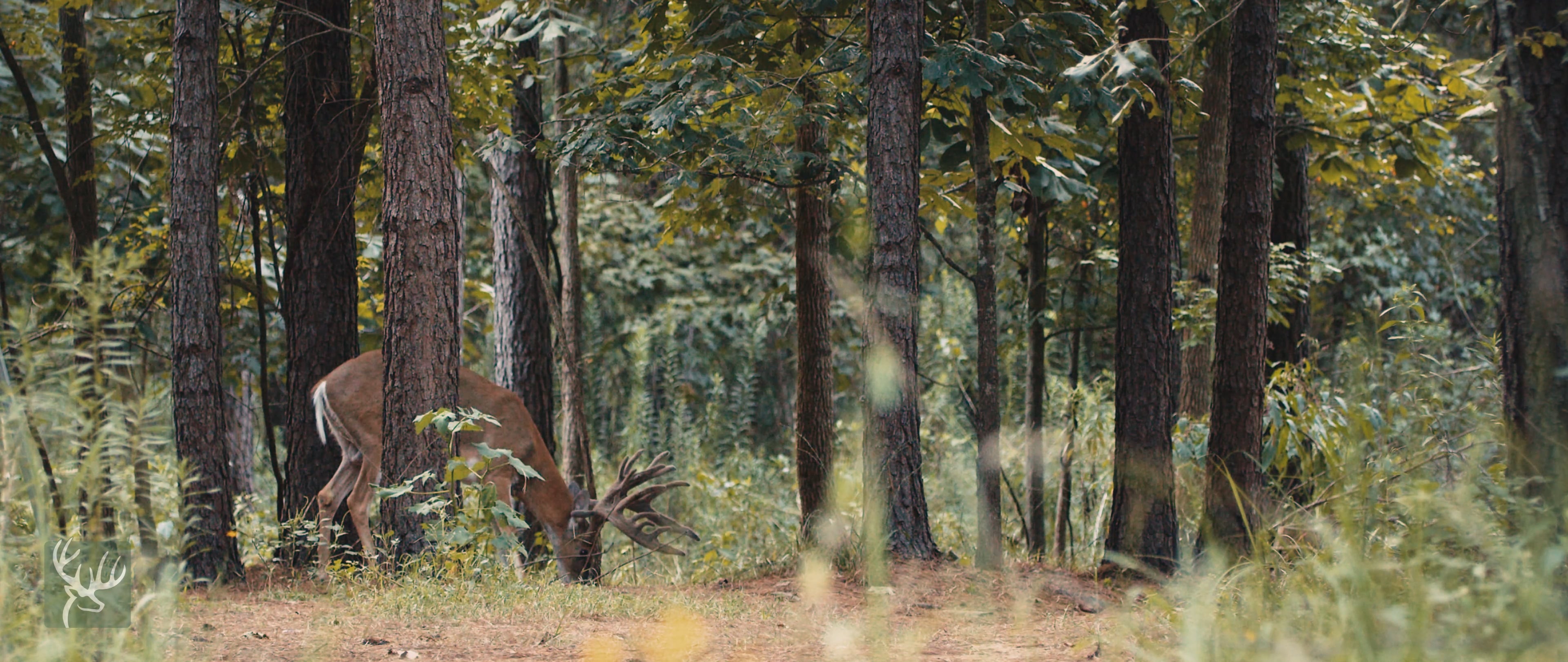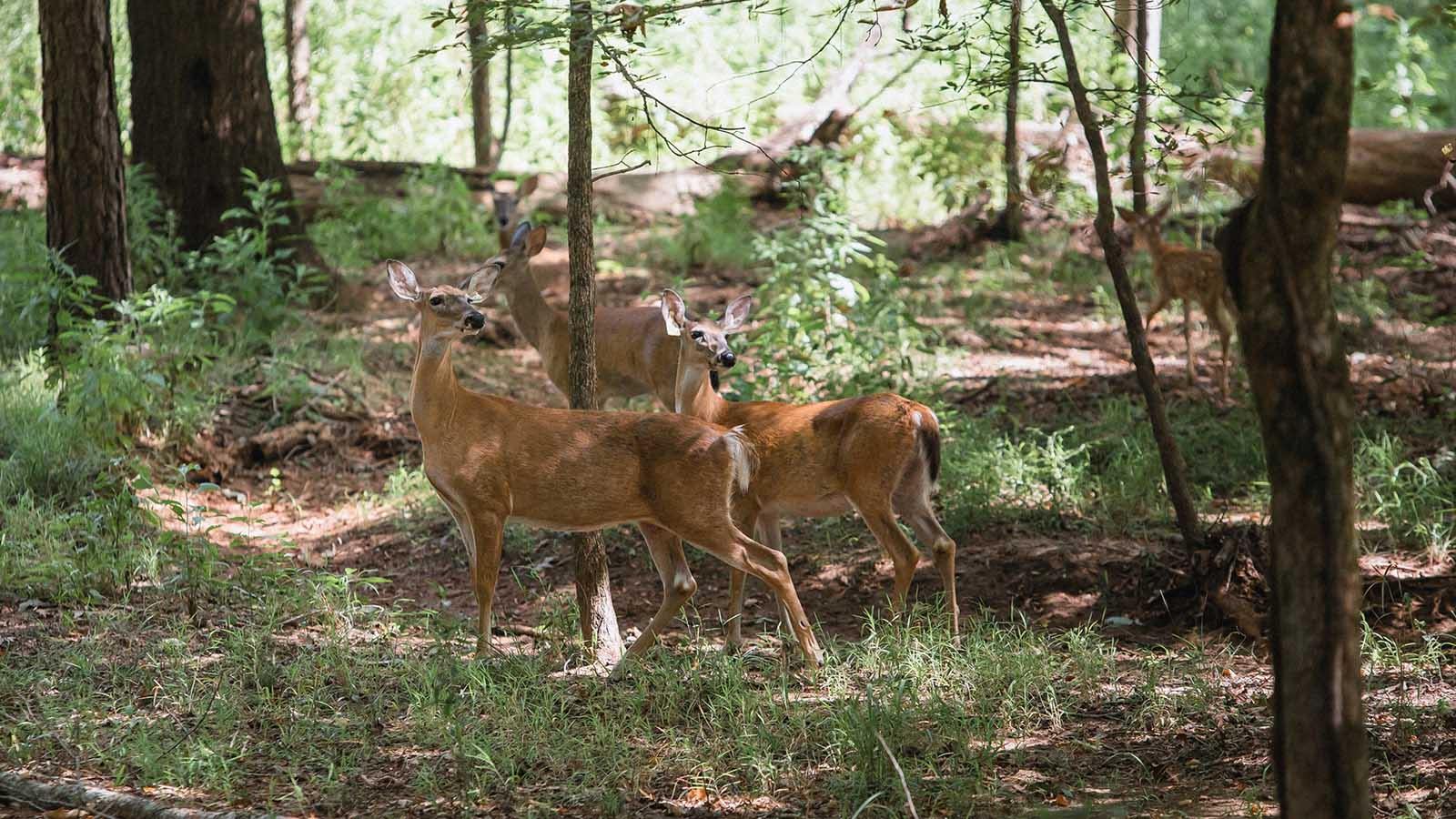There are different habitats that deer can roam through: fields with low foliage or food plots, forests with tall trees, and edges that stand between these different types of habitat.
An “edge” is where two distinct habitats meet.
Edges tend to contain more biodiversity in terms of plants and animals and are particularly helpful to and desired by deer.
There are three different types of edges: soft edges, discrete edges, and internal edges.
Soft edges gradually bring together forests and open spaces. Soft edges contain bushes, short trees, and brambles.
Discrete edges are like drawing a line on the ground, with one habitat on one side a completely different habitat on the other. For example, if a forest cuts off abruptly beside a field of wheat, those would be discrete edges.
Finally, internal edges usually occur on slopes and unite an upland forest with a bottomland one.
Out of all three edge types, deer prefer soft ones. Let’s take a look at what a soft edge contains and why deer highly appreciate them.
Soft Edges Are How Forests Are Made
Forests usually blend gradually with other habitats with soft edges around them. Deer are used to such gentle switching from forest to open field.
Why Do Deer Need a Soft Edge?
Deer feel insecure if they move from the safety of the forest to an open food plot without cover. Lack of cover means more exposure to potential predators, which is why they feel nervous when moving between such discrete edges.
They much prefer to have a soft edge between a forest and a field. The bushes and tall vegetation give them a chance to stay out of sight and examine their surroundings before proceeding forward into the open field. Deer can linger in an edge for hours before venturing into more exposed habitats.
In addition, the gradual transition from forest to open field can become bedding areas for deer to rest and potentially even used as fawning spaces.

How Do Deer Understand They Are in an Edge?
Deer recognize edges by their natural foliage and by the increase in sunlight. The tall trees of the forest cast a great deal of shade, so when a deer enters shorter foliage, they immediately notice how much more light is filtering through the leaves and branches. They also recognize the different food sources that are closer to their height.
Make the Edge as Appetizing and Appealing as Possible
Since deer spend so much time in edges, it’s always helpful for them to find food sources in the edge itself rather than venture out into an open field. Keeping an appetizing mix of grass, bushes, and short trees on your property could keep deer in your edges and happier to stay on your land.
The most appropriate bushes to plant in soft edges that appeal to deer, birds, and other animals are wild plums, sumac, American beautyberry, and dogwood. Vines, blackberry, and raspberry bushes are excellent choices as well, helping attract and maintain a deer population. You may also consider emulating natural soft edges by planting switchgrass, a great food source for deer often found around the edges of open fields.
How Can I Create a Soft Edge?
If your land does not contain soft edges between habitats, you can always create some by yourself.
The most effective transition is to have tall forest trees, followed by shorter, younger ones, then shrubs like thickets and blackberries, and finally grasses like switchgrass and wildflowers.
Sometimes, however, our land does not lend itself to soft edges—for example, if your lawn ends abruptly at the edge of a forest. In these cases, landowners can down cut some of the taller trees alongside the discrete edge. As sunshine comes through, bushes and new shoots will blossom, creating low vegetation that offers cover and food to deer.
Once your edge is established, deer will welcome it and spend time there, surveying their surroundings before advancing into the open field or the food plot.
To create a soft edge, you can either plant the bushes yourself or wait patiently for nature to do the job once the trees have been removed.
Recreating such a natural environment will make deer feel at ease and comfortable in your land. If you want deer to settle themselves on your land or are simply looking to improve the deer’s quality of life and wildlife in your area, soft edges are the way to go!
Wildtree can help you create the perfect soft edges to attract deer. Call now 346-707-6024 or email [email protected] to get started on your deer project!


